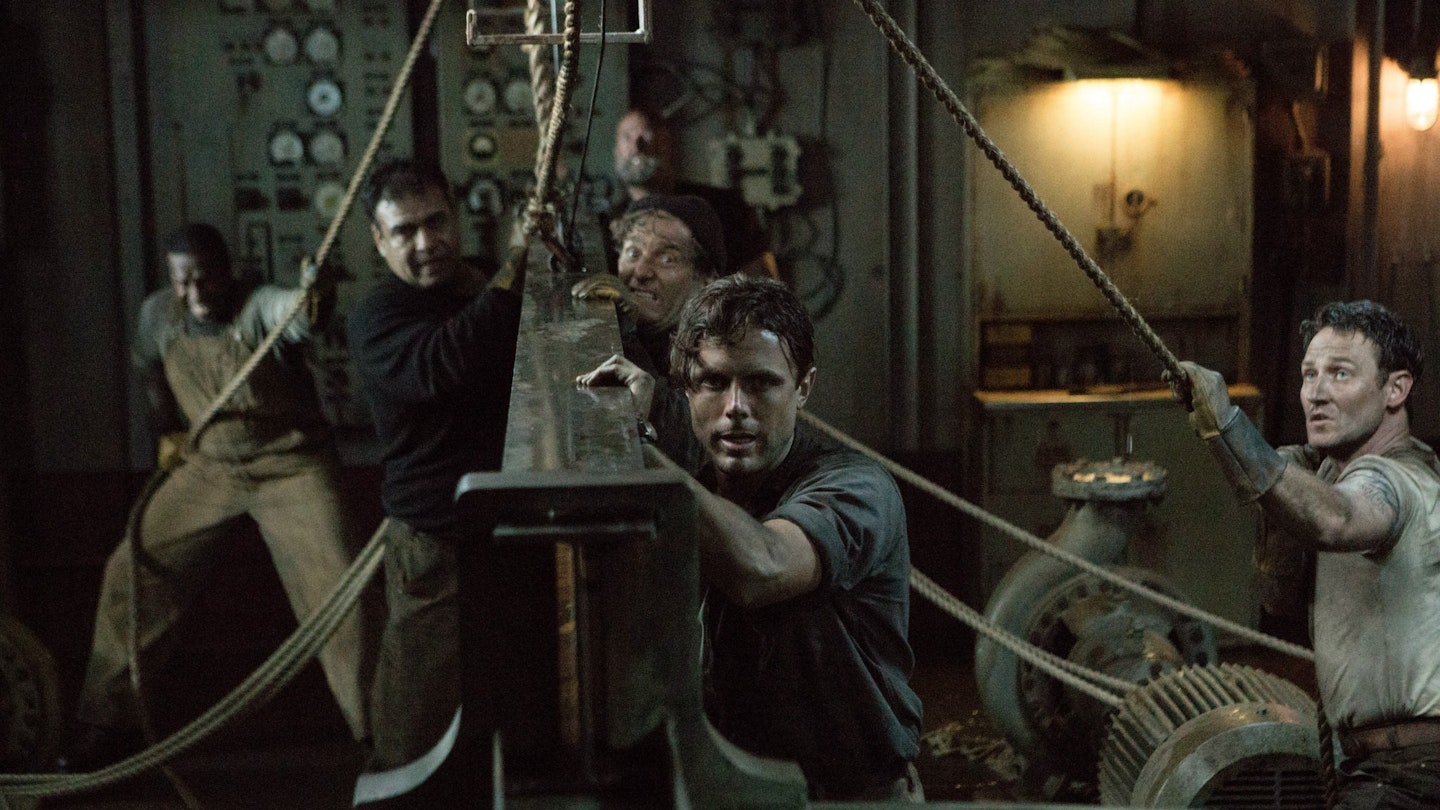The Finest Hours is set at the start of the ’50s and, save the digital effects, it feels like a film from the ’50s, too. Based on the real-life rescue of 32 men from an oil tanker ripped in half, it’s an old-fashioned paean to heroism that delivers decent action but gives good actors little to work with in the way of nuance or sophistication.
After all the drama, the crunch of the rescue boils down to negotiating a ladder.
Consider the dramatis personae. Chris Pine’s Coast Guard officer Bernie Webber is the least-favoured son (he never saw World War II action), burdened by an ill-fated rescue attempt nine years ago, who has grown into a stickler for the rules. To raise the stakes, he has recently become engaged to sparky Miriam (Holliday Grainger, in a succession of great coats presumably borrowed from the set of Carol). Dispatched by Captain Hard Bastard (Eric Bana), Webber’s rag-tag rescue party consists of a naysayer (Ben Foster), a mechanic (Kyle Gainer) and a rookie seaman (John Magaro) who has only ever chipped paint.
Over on the sinking SS Pendleton, we get Casey Affleck’s Ray Sybert, an antisocial engineer with a preternatural understanding of the ship’s workings and no truck with the notion of luck. He is surrounded by a motley crew of stock disaster-flick characters: the no-nonsense one, the scared one, the singing one (he warbles Sit Down, You’re Rockin’ The Boat — it’s that kind of movie) and the let’s-take-our-chances-in-the-lifeboats one. It’s not spoiling anything to say that the buttoned-up Pine will throw caution to the wind, Affleck will experience the magic of good fortune and Grainger will forget her outerwear.
As with The Walk and Everest, you get the sense that part of the impetus to make this now is from the desire to use 3D, to put the audience in the heart of a raging sea — and the splitting of the Pendleton is spectacular. But director Craig Gillespie doesn’t need it to create impact — the film’s most gripping action sequence sees Webber negotiating “the bar”, an almighty surge of the sea that we are repeatedly told no-one can master. Gillespie also finds visual invention elsewhere: the camera following a series of orders from the top deck to the bowels of the ship in one swooping shot, and the townsfolk turning on their car headlights to help the sailors home.
Thematically, this has all the stuff of a great movie — courage in the face of ridiculous odds, ingenuity in a crisis, underdogs being rewarded — but it doesn’t quite land. This is partly because it never finds elegant ways to set up Sybert’s ingenuity and partly because it grinds through the disaster-movie gears so slavishly. And then the crunch of the rescue, after all the drama, boils down to negotiating a ladder. That might be the truth, but it ain’t great cinema.


